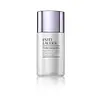What's inside
What's inside
 Key Ingredients
Key Ingredients

 Benefits
Benefits

 Concerns
Concerns

 Ingredients Side-by-side
Ingredients Side-by-side

Water
Skin ConditioningOctocrylene
UV AbsorberEthylhexyl Salicylate
UV AbsorberPropanediol
SolventButyl Methoxydibenzoylmethane
UV AbsorberPolymethyl Methacrylate
Dimethicone
EmollientPhenylbenzimidazole Sulfonic Acid
UV AbsorberPolysilicone-15
UV FilterPropylene Glycol Dicaprylate/Dicaprate
EmollientTromethamine
BufferingBis-Ethylhexyloxyphenol Methoxyphenyl Triazine
Skin ConditioningSilica
AbrasiveDimethicone/Vinyl Dimethicone Crosspolymer
Skin Conditioning1,2-Hexanediol
Skin ConditioningPolysorbate 60
EmulsifyingPEG-10 Dimethicone
Skin ConditioningSodium Hyaluronate
HumectantTocopheryl Acetate
AntioxidantXanthan Gum
EmulsifyingCaprylyl Glycol
EmollientParfum
MaskingDisodium EDTA
PEG-8
HumectantTocopherol
AntioxidantTropolone
Skin ConditioningAscorbyl Palmitate
AntioxidantAscorbic Acid
AntioxidantCitric Acid
BufferingWater, Octocrylene, Ethylhexyl Salicylate, Propanediol, Butyl Methoxydibenzoylmethane, Polymethyl Methacrylate, Dimethicone, Phenylbenzimidazole Sulfonic Acid, Polysilicone-15, Propylene Glycol Dicaprylate/Dicaprate, Tromethamine, Bis-Ethylhexyloxyphenol Methoxyphenyl Triazine, Silica, Dimethicone/Vinyl Dimethicone Crosspolymer, 1,2-Hexanediol, Polysorbate 60, PEG-10 Dimethicone, Sodium Hyaluronate, Tocopheryl Acetate, Xanthan Gum, Caprylyl Glycol, Parfum, Disodium EDTA, PEG-8, Tocopherol, Tropolone, Ascorbyl Palmitate, Ascorbic Acid, Citric Acid
Titanium Dioxide 6.3%
Cosmetic ColorantZinc Oxide 4%
Cosmetic ColorantWater
Skin ConditioningDimethicone
EmollientButyloctyl Salicylate
Skin ConditioningC12-15 Alkyl Benzoate
AntimicrobialMethyl Trimethicone
Skin ConditioningIsononyl Isononanoate
EmollientDiethylhexyl Succinate
EmollientNeopentyl Glycol Diheptanoate
EmollientButylene Glycol
HumectantDipentaerythrityl Tri-Polyhydroxystearate
EmollientLauryl PEG-9 Polydimethylsiloxyethyl Dimethicone
Skin ConditioningSilica
AbrasiveTrimethylsiloxysilicate
EmollientCetyl PEG/PPG-10/1 Dimethicone
EmulsifyingHydroxyapatite
AbrasivePolygonum Cuspidatum Root Extract
AntioxidantHordeum Vulgare Extract
EmollientTriticum Vulgare Germ Extract
Skin ConditioningThermus Thermophillus Ferment
Skin ConditioningSodium Hyaluronate
HumectantTuna Extract
Skin ConditioningLilium Tigrinum Extract
Skin ConditioningAlgae Extract
EmollientCamellia Sinensis Leaf Extract
AntimicrobialAnthemis Nobilis Flower Extract
MaskingCaffeine
Skin ConditioningTocopheryl Acetate
AntioxidantErgothioneine
AntioxidantSqualane
EmollientGlycerin
HumectantDimethicone Silylate
Hydrolyzed Wheat Protein/Pvp Crosspolymer
Dimethicone Crosspolymer-3
Skin ConditioningGlyceryl Behenate/Eicosadioate
EmollientStearalkonium Hectorite
Gel FormingCaprylyl Glycol
EmollientIsostearic Acid
CleansingPolyhydroxystearic Acid
EmulsifyingTetrahexyldecyl Ascorbate
AntioxidantDipropylene Glycol
HumectantTriethoxycaprylylsilane
Ethylbisiminomethylguaiacol Manganese Chloride
AntioxidantCyclodextrin
AbsorbentDimethicone/PEG-10/15 Crosspolymer
Isopropyl Myristate
EmollientPropylene Carbonate
SolventBHT
AntioxidantPhenoxyethanol
PreservativeCI 45410
Cosmetic ColorantCI 42090
Cosmetic ColorantTitanium Dioxide 6.3%, Zinc Oxide 4%, Water, Dimethicone, Butyloctyl Salicylate, C12-15 Alkyl Benzoate, Methyl Trimethicone, Isononyl Isononanoate, Diethylhexyl Succinate, Neopentyl Glycol Diheptanoate, Butylene Glycol, Dipentaerythrityl Tri-Polyhydroxystearate, Lauryl PEG-9 Polydimethylsiloxyethyl Dimethicone, Silica, Trimethylsiloxysilicate, Cetyl PEG/PPG-10/1 Dimethicone, Hydroxyapatite, Polygonum Cuspidatum Root Extract, Hordeum Vulgare Extract, Triticum Vulgare Germ Extract, Thermus Thermophillus Ferment, Sodium Hyaluronate, Tuna Extract, Lilium Tigrinum Extract, Algae Extract, Camellia Sinensis Leaf Extract, Anthemis Nobilis Flower Extract, Caffeine, Tocopheryl Acetate, Ergothioneine, Squalane, Glycerin, Dimethicone Silylate, Hydrolyzed Wheat Protein/Pvp Crosspolymer, Dimethicone Crosspolymer-3, Glyceryl Behenate/Eicosadioate, Stearalkonium Hectorite, Caprylyl Glycol, Isostearic Acid, Polyhydroxystearic Acid, Tetrahexyldecyl Ascorbate, Dipropylene Glycol, Triethoxycaprylylsilane, Ethylbisiminomethylguaiacol Manganese Chloride, Cyclodextrin, Dimethicone/PEG-10/15 Crosspolymer, Isopropyl Myristate, Propylene Carbonate, BHT, Phenoxyethanol, CI 45410, CI 42090
 Reviews
Reviews

Ingredients Explained
These ingredients are found in both products.
Ingredients higher up in an ingredient list are typically present in a larger amount.
Caprylyl Glycol is a humectant and emollient, meaning it attracts and preserves moisture.
It is a common ingredient in many products, especially those designed to hydrate skin. The primary benefits are retaining moisture, skin softening, and promoting a healthy skin barrier.
Though Caprylyl Glycol is an alcohol derived from fatty acids, it is not the kind that can dry out skin.
This ingredient is also used as a preservative to extend the life of products. It has slight antimicrobial properties.
Learn more about Caprylyl GlycolDimethicone is a type of synthetic silicone created from natural materials such as quartz.
What it does:
Dimethicone comes in different viscosities:
Depending on the viscosity, dimethicone has different properties.
Ingredients lists don't always show which type is used, so we recommend reaching out to the brand if you have questions about the viscosity.
This ingredient is unlikely to cause irritation because it does not get absorbed into skin. However, people with silicone allergies should be careful about using this ingredient.
Note: Dimethicone may contribute to pilling. This is because it is not oil or water soluble, so pilling may occur when layered with products. When mixed with heavy oils in a formula, the outcome is also quite greasy.
Learn more about DimethiconeSilica, also known as silicon dioxide, is a naturally occurring mineral. It is used as a fine, spherical, and porous powder in cosmetics.
Though it has exfoliant properties, the function of silica varies depending on the product.
The unique structure of silica enhances the spreadability and adds smoothness, making it a great texture enhancer.
It is also used as an active carrier, emulsifier, and mattifier due to its ability to absorb excess oil.
In some products, tiny microneedles called spicules are made from silica or hydrolyzed sponge. When you rub them in, they lightly polish away dead skin layers and enhance the penetration of active ingredients.
Learn more about SilicaSodium Hyaluronate is hyaluronic acid's salt form. It is commonly derived from the sodium salt of hyaluronic acid.
Like hyaluronic acid, it is great at holding water and acts as a humectant. This makes it a great skin hydrating ingredient.
Sodium Hyaluronate is naturally occurring in our bodies and is mostly found in eye fluid and joints.
These are some other common types of Hyaluronic Acid:
Learn more about Sodium HyaluronateTocopheryl Acetate is AKA Vitamin E. It is an antioxidant and protects your skin from free radicals. Free radicals damage the skin by breaking down collagen.
One study found using Tocopheryl Acetate with Vitamin C decreased the number of sunburned cells.
Tocopheryl Acetate is commonly found in both skincare and dietary supplements.
Learn more about Tocopheryl AcetateWater. It's the most common cosmetic ingredient of all. You'll usually see it at the top of ingredient lists, meaning that it makes up the largest part of the product.
So why is it so popular? Water most often acts as a solvent - this means that it helps dissolve other ingredients into the formulation.
You'll also recognize water as that liquid we all need to stay alive. If you see this, drink a glass of water. Stay hydrated!
Learn more about Water